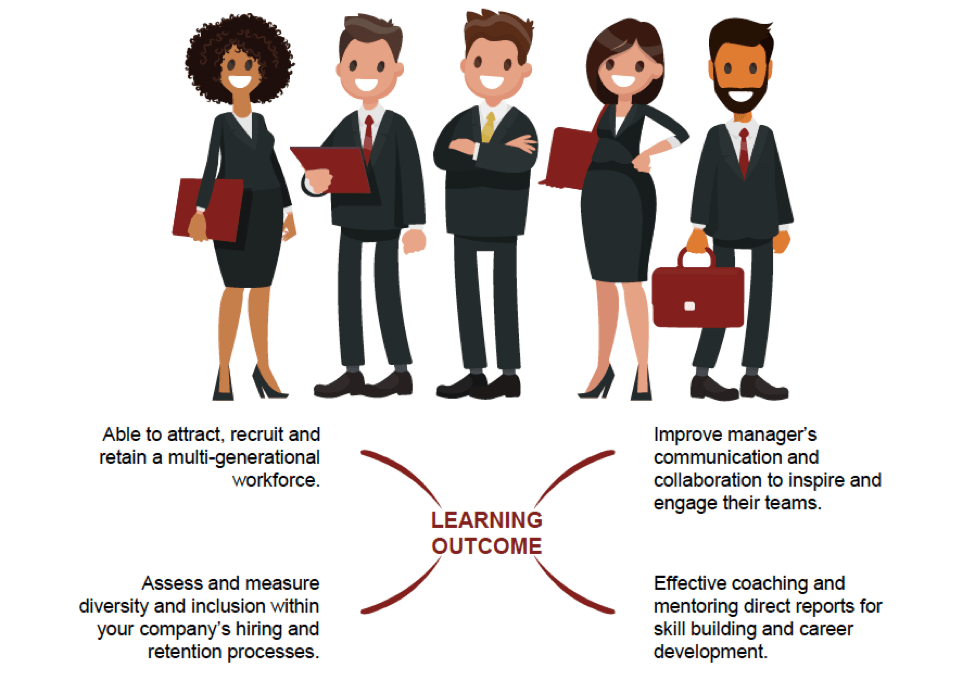Why Consider Leadership Development Training?
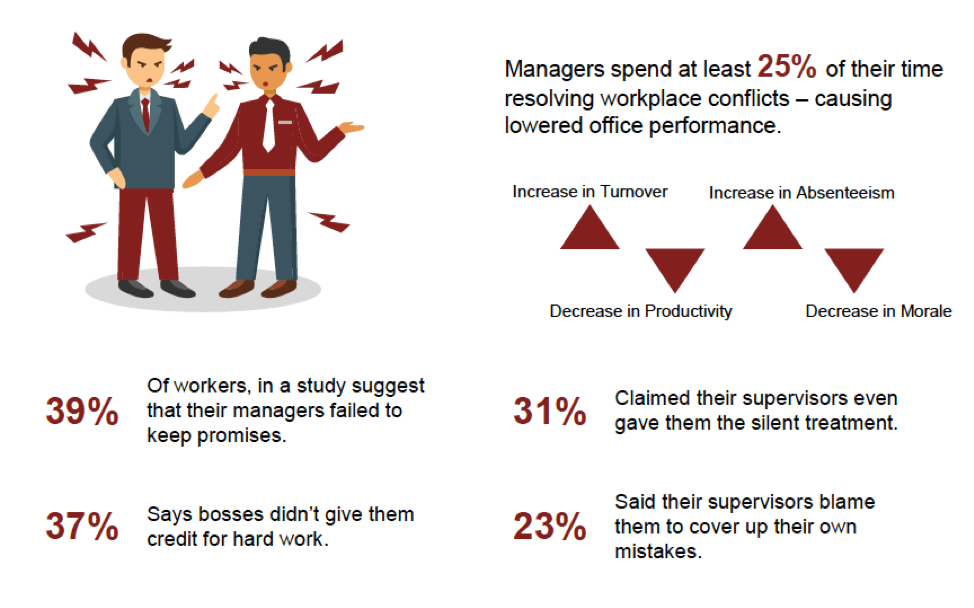
At Transformative Training, we specialize in leadership development training, so we’ve seen its benefits and results first hand. However, some organizations and individuals who could greatly benefit from leadership development training are skeptical about its effectiveness, or don’t understand what it entails.
In this guide, we’ll look at the core tenets of leadership development training, and why it’s such a powerful opportunity.
What Is Leadership Development Training?
Good leaders are typically made, not born; that’s because with the proper resources, the right training, and a unique individual approach, almost anybody can succeed in a leadership position. Conversely, even if someone has some natural “leader” qualities, if they aren’t equipped with the knowledge and experience they need, they may not succeed in the role.
Leadership development training is a process that fosters the development of the skills, knowledge, and style necessary for individuals to be effective coaches, managers, and coordinators. Different training programs have different angles of approach, but most involve the same core tenets. For example, leadership training usually begins with an assessment of the individual or individuals looking to be in a leadership position. From there, a series of lessons, hands-on exercises, coaching sessions, and evaluations will guide these individuals toward becoming stronger leaders.
Better Leadership Within Your Organization
On an organizational level, leadership development training will help you improve your business from the top down. Your team leaders and managers will become better communicators, more confident visionaries, and more effective coaches for the people working under them. They’re going to make better decisions, and nurture every individual underneath them to become a better worker. Ultimately, that means your business will run more efficiently—and your people will be happier.
Better Leadership as an Individual
Leadership training is also good on an individual level. Individual people who seek leadership training give themselves more opportunities to improve their careers. For some, that means seeking a promotion and leading a team of their peers. For others, that means starting their own business and building a team from scratch.
Individuals in nearly any career can benefit from leadership training, since leadership is all about working with others, making decisions, and coming up with more creative solutions to problems—challenges common in every career.
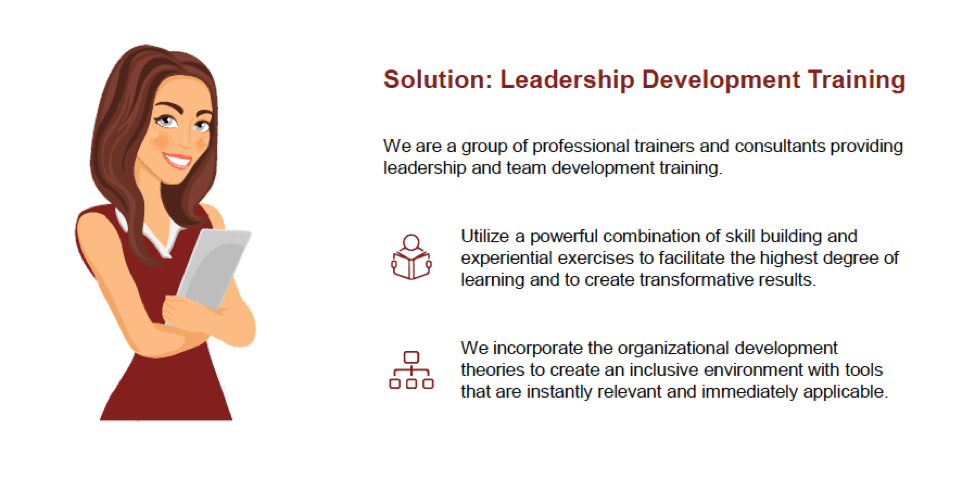
Core Leadership Skills and Competencies
In any case, most leadership development programs focus on the core leadership skills necessary for success. Everything starts with these fundamentals:
- Personality insights. First, you have to understand your own personality and the personalities of the people around you. Every individual has a different set of behaviors, habits, and traits that make them unique from others. If you ignore these traits and treat everyone the same, you won’t be able to maximize the performance of your individual team members. If you don’t realize your own strengths and weaknesses, you’ll never be able to reach your full potential as a leader. The first step is always introspecting—examining your own personality and learning what your strengths and weaknesses are.
- Personal management style. By extension, you can use your personality as a starting point to develop your own personal management style. While there are some traits commonly present in “good” leaders, there isn’t a management style that’s strictly better than any other. Some people are better suited to be strict and challenging, while others are better off being more flexible and nurturing. Some people want to get involved with their employees and work together as much as possible, while some prefer more employee autonomy and a hands-off approach. These aren’t right or wrong, in general, but they may be right or wrong for some individuals. Finding the style that works for you is an absolute must.
- Motivation is the progenitor of productive work. If a person is intrinsically and/or extrinsically motivated to do their best work, there isn’t much that can get in their way. A good leader is someone who understands the nature of motivation, and is able to motivate their employees in ways that cater to them as individuals. An organization with leaders that know how to motivate their employees will be practically unstoppable. An added benefit to this skill is that strong leaders also learn to recognize what motivates themselves; they then become better at setting personal goals and reshaping their own work environments to be self-sustaining.
- Leaders are in constant communication with other people. Depending on their specific role, they might spend most of their day talking to employees, higher-ups, clients, partners, or other parties. Whatever the case, they need to be able to express themselves clearly and confidently at all times. With leadership training, individuals can learn not only how to wield more persuasive and concise language, but also how to adapt to different communication styles and personal needs on the fly. Communication includes many different sub-areas, including different mediums of communication (like email vs. phone calls) and secondary forms of communication like body language.
- Teamwork and collaboration. Most leaders are working in the context of a team; they have a group of employees, partners, or other contacts working under them, and are responsible for ensuring their success. In most cases, this means creating an environment that allows these people to work together toward a common goal in the most efficient and least frictional way possible. If you have individuals with personality conflicts, this can be tough to manage—but a good leader will be able to sort things out by assigning individual tasks, facilitating open dialogue, or executing collaboration in unique ways.
- For a leader to be effective, there needs to be an established and mutual line of trust between them and their employees. Leaders need to trust that employees are going to respect them, which can bring them more confidence and allow them to encourage more employee autonomy. Employees need to trust that their leaders have their best interests in mind, and have confidence that this person is competent. A good leadership training program will give leaders the tools they need to build and reinforce this trust along both axes.
Once those are mastered, or at least established, aspiring leaders can focus on more complex or more advanced skills, including:
- Giving and receiving feedback. It can be tough to give and receive feedback, especially when that feedback is negative or critical. But this is one of the most important functions of a leader; employees need to know what they’re doing right and what they could be doing better, or they’re never going to have the chance to grow. In leadership training, your leaders will learn how to structure this criticism in a way that gets results while still preserving—if not increasing—employee morale. They’ll also learn how to invite criticism from their employees, so they can keep improving as a leader.
- Mediating interpersonal conflicts. No matter how perfect your team seems to be on the surface, it’s only a matter of time before you run into a personality conflict. One person may feel slighted by another, or employees may not be splitting the workload in a way that everyone thinks is fair. Whatever the case, part of a leader’s job is mediating these conflicts—trying to prevent them wherever possible, and resolving them as quickly and fairly as possible when they do arise.
- Building confidence. Your organization’s leaders can’t be effective leaders unless they have self-confidence. Confidence lends itself to decisive action, patience, humility, and even the ability to garner more respect from employees. It’s hard to teach confidence the way you can teach communication skills and conflict resolution strategies, but over the course of a good leadership training program, your leaders will gradually feel more capable, and more confident in their ability to lead.
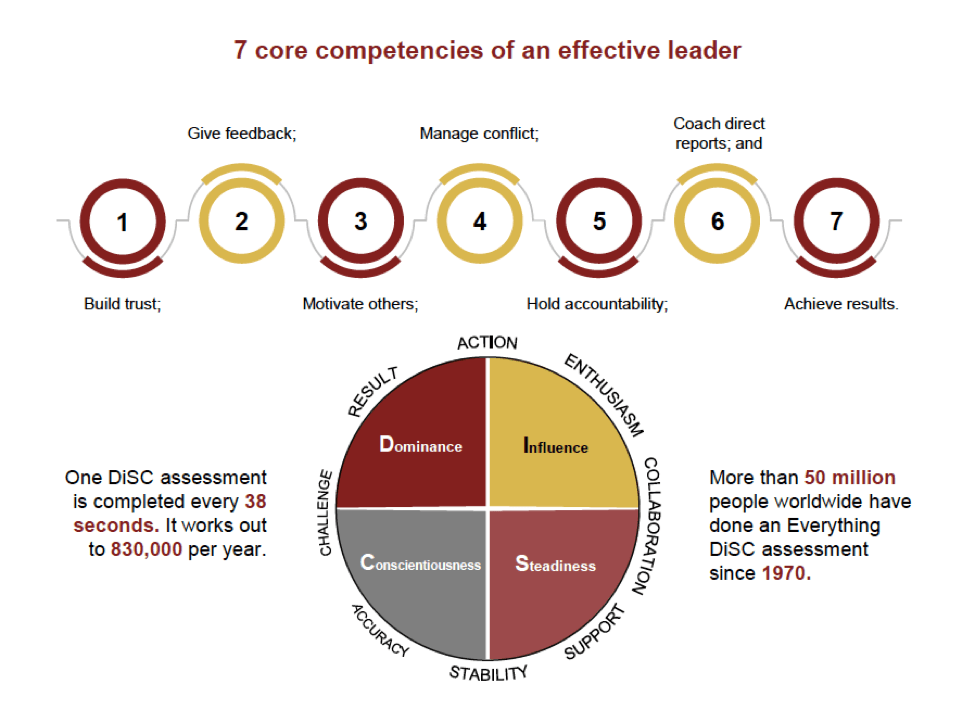
DiSC Assessment
Many leadership development training practices, including Transformative Training, include a DiSC assessment as part of the program. DiSC is a proprietary personality profile that attempts to break down a person’s tendencies, values, and behaviors across four main categories of traits.
Why is this done? For starters, every individual is going to have strengths and weaknesses. For example, some people are highly self-motivated but might struggle with accepting constructive criticism. Others are very supportive of others, but might struggle to voice their opinion if it dissents from the majority. Understanding these can help a leader play to their strengths, while compensating for their weaknesses.
On top of that, understanding what makes you unique can help you establish your own, individual leadership style. For example, are you more focused on bottom-line results? Or do you care more about making sure the team functions in a healthy and mutually supportive way?
- DOMINANCE. Dominance refers to a person’s tendency to focus on bottom-line results, and may also affect their confidence. Dominant people tend to see the “big picture” and are able to be blunt when the situation calls for it. They also tend to get straight to the point and are willing to accept challenges.
- INFLUENCE. Influence refers to a person’s tendency to focus on influencing and persuading other people. It also affects their openness and the quality of their personal relationships. Influential people tend to show enthusiasm and optimism in all situations. They like to collaborate with others and hate to feel ignored.
- STEADINESS. Steadiness refers to a person’s tendency to focus on cooperation, sincerity, and dependability. Steady people hate to feel rushed, and generally have both a calm demeanor and a calm, rational approach to problem solving. They’re also good at supporting others.
- CONSCIENTIOUSNESS. Conscientiousness refers to a person’s tendency to focus on the quality, competency, accuracy, and expertise of their work. Conscientious people greatly enjoy autonomy and independence, and are capable of objective reasoning. They may fear being wrong, and always seek more details before making a decision.
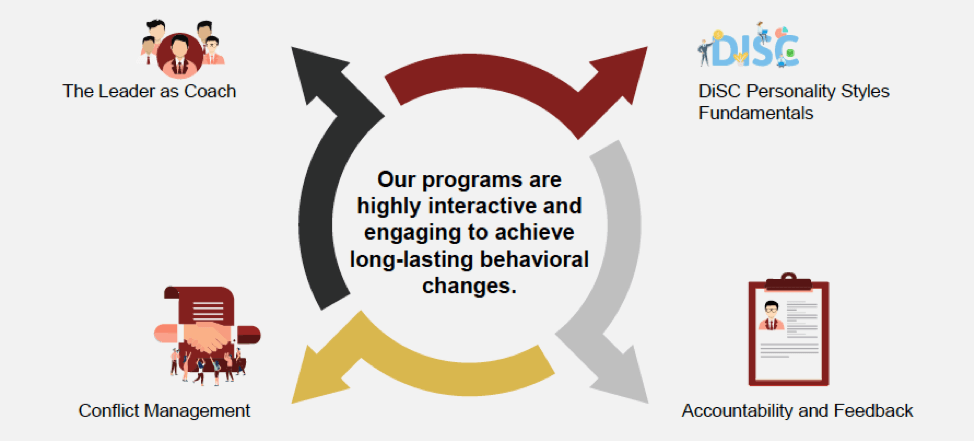
The Benefits of Personal Coaching for Team Leaders
There are multiple ways to improve your abilities as a potential leader, each with their own strengths and weaknesses. For example, it’s possible to become a better leader just by being in a leadership position; over time, you’ll gradually learn what works and what doesn’t. However, this is usually inefficient, and could lead someone down the wrong path.
One of the most valuable ways to develop leadership skills is with a hands-on personal coach. There are several benefits to this approach:
- Real-time feedback. With a personal coach or team of coaches, you’re going to get real-time feedback. Rather than waiting for an annual evaluation period or waiting for an employee to bring up a point of contention, a leader can get an immediate correction (or an idea on how to approach things differently). This feedback is also external and neutral, since it relies on an experienced third party.
- Goal setting. Good coaches also help leaders set goals catered to their individual strengths, weaknesses, and long-term objectives. Alone, it’s hard for leaders to set goals that are truly actionable, and even harder to set goals that are achievable, yet challenging enough to inspire real growth. A coach can help brainstorm ideas and evaluate which goals may be best.
- Active exercises. Coaches can also help role play various scenarios, giving leaders the chance to engage in physical leadership exercises—rather than just studying the theory of good leadership on paper. These training simulations are vital to the experience, helping leaders remember the most important fundamentals and building their confidence simultaneously.
This is also useful because most leaders will serve a role as a coach for the people working under them, at least in some capacity. Their leadership coach can serve as a good model for their future responsibilities in this area.
Leadership development training looks a little different depending on the needs of the individual or organization seeking it, but it’s almost universally valuable. If you’re looking for a way to make more money or improve the efficiency of your business, contact us today for a free 15-minute needs assessment, or to reserve a date for leadership training.
